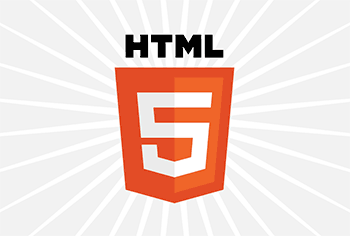
HTML5 Definition Complete, W3C Moves to Interoperability Testing and Performance
First Draft of HTML 5.1 Offers Glimpse at Next Round of Standardization
 The World Wide Web Consortium (W3C) published today the complete definition of the HTML5 (www.w3.org/TR/2012/CR-html5-20121217/) and Canvas 2D (www.w3.org/TR/2012/CR-2dcontext-20121217/) specifications. Though not yet W3C standards, these specifications are now feature complete, meaning businesses and developers have a stable target for implementation and planning. HTML5 is the cornerstone of the Open Web Platform, a full programming environment for cross-platform applications with access to device capabilities; video and animations; graphics; style, typography, and other tools for digital publishing; extensive network capabilities; and more.
The World Wide Web Consortium (W3C) published today the complete definition of the HTML5 (www.w3.org/TR/2012/CR-html5-20121217/) and Canvas 2D (www.w3.org/TR/2012/CR-2dcontext-20121217/) specifications. Though not yet W3C standards, these specifications are now feature complete, meaning businesses and developers have a stable target for implementation and planning. HTML5 is the cornerstone of the Open Web Platform, a full programming environment for cross-platform applications with access to device capabilities; video and animations; graphics; style, typography, and other tools for digital publishing; extensive network capabilities; and more.
"The broader the reach of Web technology, the more our stakeholders demand a stable standard," said W3C CEO Jeff Jaffe. "As of today, businesses know what they can rely on for HTML5 in the coming years, and what their customers will demand. Likewise, developers will know what skills to cultivate to reach smart phones, cars, televisions, ebooks, digital signs, and devices not yet known."
W3C also announced today the first draft of HTML 5.1 (www.w3.org/TR/2012/WD-html51-20121217/) and Canvas 2D, Level 2, an early view of the next round of standardization.
From Leading-Edge Implementations to Broad HTML5 Interoperability in 2014
Recent advances in technology and a vibrant browser market have been the source of significant innovation, much of which is now part of HTML5 and related technologies. In a recent Kendo UI survey of more than 4000 developers, 63 percent indicate that they are "actively developing with HTML5." However, the same survey shows that "browser fragmentation" remains an important developer concern, as it increases the cost and complexity of using a technology.
To reduce browser fragmentation and extend implementations to the full range of tools that consume and produce HTML, W3C now embarks on the stage of W3C standardization devoted to interoperability and testing (called "Candidate Recommendation").
During this stage, the W3C HTML Working Group will conduct a variety of activities to ensure that the specifications may be implemented compatibly across browsers, authoring tools, email clients, servers, content management systems, and other Web tools. The group will analyze current HTML5 implementations, establish priorities for test development, and work with the community to develop those tests. The HTML Working Group has planned for this implementation phase to last into mid-2014 (dev.w3.org/html5/decision-policy/html5-2014-plan.html), after which W3C expects to publish the final HTML5 Recommendation, available Royalty-Free to implementers under the W3C Patent Policy (www.w3.org/Consortium/Patent-Policy-20040205/).
The HTML Working Group is not alone in its pursuit of success for HTML5 and the broader Open Web Platform. For example, the Web Performance Working Group (www.w3.org/2010/webperf/) is developing techniques to measure and enhance Web application performance and has recently published findings (www.w3.org/2012/11/performance-workshop/report.html) from a November Workshop (www.w3.org/2012/11/performance-workshop/). The Web and TV Interest Group and the Core Mobile Web Community Group have prioritized testing as a way to promote deployment to a growing set of devices.
Acknowledgments
Many people in the W3C Membership, staff, and the wider community of reviewers have contributed to the specifications published today.
W3C recognizes the work of Ian Hickson (Google), who has been the editor of the HTML5 specification for nearly all of its history.
W3C appreciates the ongoing leadership of the HTML Working Group co-Chairs Paul Cotton (Microsoft), Sam Ruby (IBM), and Maciej Stachowiak (Apple). W3C also thanks the current editors who will help shepherd the specifications to W3C Recommendation.
W3C thanks all the organizations and individuals participating in the HTML Working Group for the significant time and energy they have invested, and for their ongoing commitment.